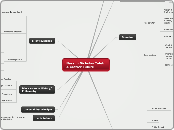KAMIEN & SCHWARTZ 1982
Empirical testing of those 2 theories
Conclusion
Neither perfect competition or perfect monopoly appear to be most conducive to technological advance
Hard to say because
How to measure monopoly power?
How to measure firm size?
How to define the outputs in the process?
use number of workers assigned to R&D or Spendings in total
Hard to define innovation
Use patents stats
Are those theories correct?
Galbraith theory
Large firms are more than proportionnately more innovative than small firms
Demand-push
Edge for large scale firms with better facilities to respond the opportunity
New marketing opportunity and demand / innovation in response
Technology-push
Requires R&D investment / edge for large scale firms
Firm innovates and push the idea on a non-existing market
The edges of large size company for innovation
Better exploitation of the outputs from R&D
Bigger pool of ideas
Researchers get more productive with more colleagues
Innovation is increasingly expensive
Schumpeter theory
Positive relation between innovation and monopoly power
Situation 2: Possession of Monopoly Power
Slower to replace with superior products
Lack of motivation for new innovations
Additional leisure
Ability of Hiring top innovative people
Possible self-financement because borrowing leads to information disclosure
Ensure the profitability
Discrourage imitation
Extend Monopoly to new products
Situation 1: Anticipation of Monopoly Power
Erection of barriers
Ability to prevent or retard imitation by patents, trademarks or copyrights
Potential problems of innovation
Failure from the inventor
Solution 2: Accept departures from the conditions for perfect competiton = Enter a market oriented system
Solution 1: Collective financing to spread the risk
Moral hazard consists in forcing the inventor to carry more risks in the project to be more involved in its success
Uncertainty: about profitability / success which makes it more expensive to invest in innovative activities
Monopoly power and large size firms can reduce uncertainty by targetting profitable opportunities
BOWER & CHRISTENSEN 1995
Disruptive technologies create disadvantages for established companies
How to spot them and compete them?
Keep it independant to avoid the established companies' mistakes of only focusing on ASSURED markets
Create your own disruptive and independant organization
Identify the disruptive technology's starting market and customers
Define the market strategy
Disruptive or sustaining technology?
Example of the Hard-disk-drive industry
SEAGATE TECHNOLOGY and the 5.25 inch
Seagate = Leader in 5,25 inch drives
Former Seagate employees create their company CONNER PERIPHERALS
Become direct competitor to 5,25 drives with advantages
Improve the 3,5 inch drives capacity
Emerging Market
Specialized in 3,5 inch drives ("Inferior technology")
Decide not to invest in 3,5 inch drive as their clients (IBM mostly) are not interested
Managers keep doing what has worked in the past / where the market is assured
Disruptive technologies can look financially unattractive to established companies
Why investing in something less elaborated than what we already offer?
Technologies initially inferior (disruptive) become more adapted to customers' needs
How to stay to stay at the top of your industry?
Technological changes that revolutionize the market are usually
Improving the performance attributes valued by customers
Different package of performance attributes
Not difficult from a technological point of view
Not radically new
Implement processes to identify customers needs and forecast technolgical Trends
DISRUPTIVE TECHNOLOGIES = Less advanced but more competitive and adapted to customers' value
Example:IBM and minicomputers
Blind the comanies to important NEW EMERGING MARKETS
CURRENT markets and customers
Well-managed companies = ahead of their industry
Address the customers' needs
Imcremental improvements OR breakthroughs
Developing and commercializing new technologies
Leading companies stay close to the customers
Anticipation of the customers' demand
ABORNATHY & UTERBACK (1982)
Product Lifecycle over the time
Both tend to meet
Process Innovations
Rate of Major Innovations
How does a company innovation evolve when it grows?
Standardized Product
Incremental innovations
Changes are costly
Production technology efficient
Low unit profit margins
Products well understood
Well defined market
High volumes
Large Unit Production
Major New Product
Market needs ill defined
Quick changes in th process
Dominant design not reached
Flexible Technical Approach
Process yet to be upgraded
Vague performance criteria
BAUMOL (2004)
Public Sector
30% of R&D Spendings in the US
Universities
Patent a lot to boost their image
Bring fresh and intuitive Point of View
Collaborate with Governments and Private Sector
Government
Active contribution
Research on domains that are not attractive enough for the Private Sector
R&D on long term projects (Ex military research)
Support the basic research (Ex Internet)
Passive contribution
Avoid the interferences
Protection for intellectual property
Provide legal infrastructures
Private Sector
70% of R&D Spendings in the US
High risks of imitation and reverse engineering
Why?
Position of oligarchy
Secure to enter a market that already exists
High risks of failure
High costs of R&D
Small Companies
Entrepreneurship
Innovation in all different kind of domains
Look for revolutionnary breakthroughs
Few patents / high rate of top patents
Innovate to create new market opportunities
Explore unexisting markets
Big Companies
Patent a lot, but a short rate of top patents
Unspeculative
Innovate to Survive their competitors
Product Improvement
Avoid the unknown markets
Oligopoly
BLUE OCEAN STRATEGY by KIM & MAUBORGNE
How to create a Blue Ocean?
No need to focus on technological innovation
Create Added Value for the customer
Thinking about opportunities instead of beating existing competitors
Creation of a "New Market"
Cost Reduction
Omit the costly elements
Blue Ocean = Uncontested Market Place
Irrelevant Competition
Represents 14% of new ventures
Examples
Nickelodeon
Apple personal computer
CTR's Tabulating Machine
CompaQ
Chrysler Minivan
Ford Model T
Cirque du Soleil
Brand Equity
Growth
Unknown Market Spaces
High Profits
Red Ocean = Overcrowded Industry (No opportunities)
Represents 86% of new ventures
Fighting for Market Share
Though Competition
Known Market Space









